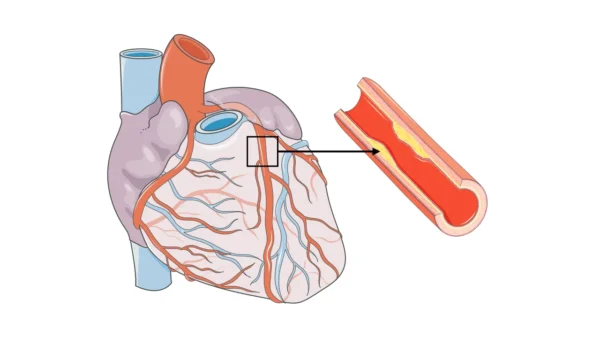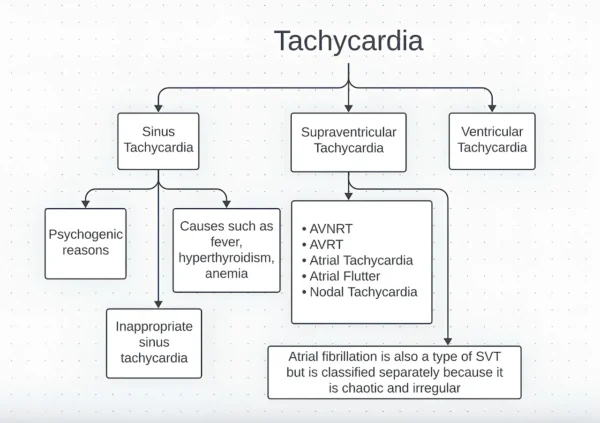Pulmonary hypertension (PH) is a condition where the blood pressure in the arteries of your lungs becomes abnormally high. These vessels normally carry blood from your heart to your lungs to pick up oxygen. When they become narrowed, stiff, or blocked, the pressure inside them rises, making your heart—especially the right side—work much harder. Over time, this extra strain weakens the heart and leads to serious health problems. Pulmonary hypertension can develop slowly and silently, or progress rapidly depending on the cause. Early recognition and treatment significantly improve quality of life and long-term outcomes.
Overview
Pulmonary hypertension means the blood vessels in your lungs have unusually high pressure. Unlike regular high blood pressure in the body’s arteries, PH specifically affects the pulmonary arteries and capillaries. As the pressure increases, the right side of your heart must pump harder to push blood through these narrowed vessels. Over time, this strain can lead to right-sided heart failure.
PH is not a single disease. It is a group of disorders that share the same final result—high pressure in the lung arteries—but differ greatly in cause and severity. Some forms develop from heart or lung disease, some from chronic blood clots, and others from rare diseases affecting the blood vessel walls. Symptoms often creep in slowly, leading many people to mistake early signs for aging, deconditioning, or asthma.
Early diagnosis is crucial because PH is progressive. While not all forms are curable, many treatments can slow the progression, improve symptoms, and help people live longer, fuller lives.
Causes
Pulmonary hypertension can develop from a wide range of problems that affect the heart, lungs, or blood vessels. Doctors classify PH into five major groups based on the underlying cause.
- Pulmonary arterial hypertension (PAH) occurs when the small arteries in the lungs thicken or tighten due to diseases like connective tissue disorders, congenital heart defects, liver disease, HIV infection, or certain medications. In many cases, the exact cause is unknown.
- Left-sided heart disease is one of the most common causes. Problems such as mitral valve disease, aortic valve disease, or left-sided heart failure increase pressure in the lungs’ vessels over time.
- Lung diseases including COPD, pulmonary fibrosis, and sleep apnea can raise pressure in lung arteries by reducing oxygen levels and damaging blood vessels.
- Chronic blood clots in the lungs, known as chronic thromboembolic pulmonary hypertension (CTEPH), block blood flow and increase pressure.
- A final group includes rare disorders involving blood, metabolic diseases, or conditions that compress lung vessels.
Even though there are many causes, the end result is the same: elevated pressure that strains the right side of your heart.
Symptoms
Pulmonary hypertension often begins quietly. Symptoms usually appear gradually and get worse over time.
The most common early symptom is shortness of breath, especially during activity. Tasks that once felt easy—climbing stairs, walking uphill, or carrying groceries—become harder.
People often feel fatigue or general weakness because the body isn’t receiving enough oxygen-rich blood.
As PH progresses, additional symptoms may include:
- Chest discomfort or pressure
- A racing heartbeat (palpitations)
- Dizziness or fainting spells, especially during exertion
- Swelling in the legs, ankles, or abdomen from fluid buildup
- Bluish lips or fingertips (cyanosis), reflecting low oxygen levels
Severe cases may cause fainting during activity or even at rest. Because these symptoms overlap with many other conditions—like asthma, anemia, or anxiety—PH is often missed in its early stages.
Diagnosis
Diagnosing pulmonary hypertension requires a combination of careful clinical evaluation and specialized testing.
Doctors begin with a detailed history and physical examination. Clues such as leg swelling, a loud second heart sound, or signs of right-sided heart strain may suggest PH.
A transthoracic echocardiogram is typically the first major test. It estimates the pressure in the pulmonary arteries and assesses the heart’s structure and function.
Other tests include:
-
Electrocardiogram (ECG) to assess heart rhythm and strain
-
Chest X-ray to look for enlarged heart chambers or widened pulmonary arteries
-
Blood tests to evaluate underlying causes
-
Pulmonary function tests to check for lung disease
-
CT scan or ventilation-perfusion (V/Q) scan to look for chronic blood clots
The gold standard for confirming pulmonary hypertension is right-heart catheterization, which directly measures pressures in the lung arteries. This test is essential before starting many advanced PH treatments.
Treatment
Treatment depends on the type of pulmonary hypertension and its underlying cause. The goals are to reduce pressure in the lungs, ease symptoms, and protect the heart from further strain.
- For many people, treating the underlying disease is key. Managing conditions like sleep apnea, COPD, lung fibrosis, or left-sided heart disease often improves PH.
- Lifestyle changes—including quitting smoking, maintaining healthy weight, staying active within limits, and monitoring salt intake—help support overall heart and lung health.
- Advanced medications are used for pulmonary arterial hypertension and certain other forms. These may include drugs that relax lung vessels, improve blood flow, or reduce vessel thickening. Examples include endothelin receptor antagonists, phosphodiesterase-5 inhibitors, prostacyclin therapies, and soluble guanylate cyclase stimulators.
- Blood thinners are used in patients with chronic clot-related PH (CTEPH). Some patients benefit from a specialized surgery called pulmonary endarterectomy, which removes old clots and can significantly improve or even cure the condition.
- Supplemental oxygen may be needed if oxygen levels are low.
- For advanced cases where medication is not enough, lung transplantation or combined heart-lung transplantation may be considered.
What Happens If Left Untreated
- Untreated pulmonary hypertension gets progressively worse. As pressure in the lung arteries rises, the right side of the heart must work harder to push blood forward. Over time, this extra workload causes the heart muscle to enlarge, weaken, and eventually fail.
- People often become more short of breath, even with minimal activity or at rest. Fluid buildup leads to swelling in the legs, abdomen, and organs. Fatigue becomes overwhelming due to inadequate oxygen delivery.
- Severe, untreated PH leads to right-sided heart failure, fainting spells, dangerous heart rhythms, and significantly increased risk of death.
- Early diagnosis and treatment are essential to slow or stop this progression.
What to Watch For
- Shortness of breath that gradually worsens over weeks or months is one of the most important signs to watch for. Reduced exercise tolerance, dizziness, fainting during activity, or chest discomfort should never be ignored.
- Swelling in your legs, rapid heartbeat, or unexplained fatigue may also point to PH, especially in people with risk factors such as lung disease, heart valve disease, or a history of blood clots.
- A bluish tint to lips or fingertips is a sign that oxygen levels may be dangerously low.
- Because symptoms often seem mild at first, early evaluation for persistent breathing difficulties is critical.
Living with Pulmonary Hypertension
Living with PH means learning to monitor your symptoms, manage triggers, and follow your treatment plan closely.
- Regular follow-up visits with a cardiologist or pulmonologist are essential. Many PH medications require careful dose adjustments and monitoring.
- Staying active is beneficial, but activity should be tailored to your abilities. Pulmonary rehabilitation programs provide supervised exercise and education.
- Avoiding high altitudes, extreme temperatures, and strenuous activity helps prevent sudden symptom worsening.
- Eating a balanced, low-salt diet helps reduce fluid buildup. Maintaining a healthy weight and avoiding smoking are crucial for lung and heart health.
- Emotional support is important. PH can feel overwhelming, and support groups, counseling, and patient communities help many people cope.
- With proper treatment, many people with pulmonary hypertension live active and fulfilling lives.
Key Points
- Pulmonary hypertension is high pressure in the lung arteries that forces the right side of the heart to work harder.
- Symptoms include shortness of breath, fatigue, chest discomfort, palpitations, dizziness, and swelling.
- Diagnosis relies on echo, blood tests, lung tests, scans, and confirmation with right-heart catheterization.
- Treatment depends on the cause and may include lifestyle changes, targeted medications, oxygen therapy, blood thinners, or surgery.
- Untreated PH leads to right-sided heart failure and serious complications.
- Early diagnosis and consistent treatment significantly improve quality of life and long-term outcomes.






